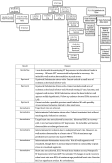Barriers to outpatient stress testing follow-up for low-risk chest pain patients presenting to an ED chest pain unit
Affiliations
- Department of Emergency Medicine and Hospitalist Services, Medical College of Georgia at Georgia Regents University, Augusta, GA
Affiliations
- Department of Emergency Medicine and Hospitalist Services, Medical College of Georgia at Georgia Regents University, Augusta, GA
Affiliations
- Department of Emergency Medicine and Hospitalist Services, Medical College of Georgia at Georgia Regents University, Augusta, GA
Affiliations
- Department of Biostatistics and Epidemiology, Medical College of Georgia, Georgia Regents University, Augusta, GA
Affiliations
- The Medical College of Georgia at Georgia Regents University, 1120 15th Street, AF 2020, Augusta, GA, USA 30912
Correspondence
- Corresponding author. Tel.: +1 706 721 4467.

Affiliations
- The Medical College of Georgia at Georgia Regents University, 1120 15th Street, AF 2020, Augusta, GA, USA 30912
Correspondence
- Corresponding author. Tel.: +1 706 721 4467.
 Article Info
Article Info
To view the full text, please login as a subscribed user or purchase a subscription. Click here to view the full text on ScienceDirect.

Figure
Flowquery of low risk patient participation
TTE = transthoracic echocardiogram
CTA = computed tomography angiography
*Borderline, equivocal, and inconclusive results.
Abstract
Introduction
Outpatient stress testing (OST) after evaluation in the emergency department (ED) is an acceptable evaluation method for patients presenting to the ED with low-risk chest pain (CP). However, not all patients return for OST. Barriers to follow-up evaluation exist and are poorly understood. In this study, we examined the influence of demographic and social characteristics on OST compliance.
Methods
Data were collected on low-risk CP patients with scheduled OSTs. OST compliance was assessed and then analyzed for correlation with potential barriers including insurance type; age; sex; race; employment status; the distance the patient lived from the hospital; whether or not the patient had a primary care physician; whether or not the patient had a history of hypertension or diabetes; and whether or not the patient had a history of tobacco, alcohol, or illicit drug use.
Results
A total of 275 patients were enrolled over a 5-month period. These patients had an OST follow-up rate of 61.82% within 72 hours of discharge from the ED. Patients with Medicaid were statistically less likely (odds ratio [OR], 0.439) to complete OST. Patients with commercial insurance (OR, 1.8225), who were employed (OR, 2.299), or who were retired (OR, 3.44) were more likely to complete OST. All of the other variables analyzed were not statistically significant factors in OST compliance.
Conclusion
More than one-third of low-risk CP patients do not follow-up with scheduled OST. Of the variables analyzed, both employment status and insurance type were statistically significant and should be included in risk stratification strategies for OST.
To access this article, please choose from the options below
Purchase access to this article
Claim Access
If you are a current subscriber with Society Membership or an Account Number, claim your access now.
Subscribe to this title
Purchase a subscription to gain access to this and all other articles in this journal.
Institutional Access
Visit ScienceDirect to see if you have access via your institution.
Related Articles
Searching for related articles..



